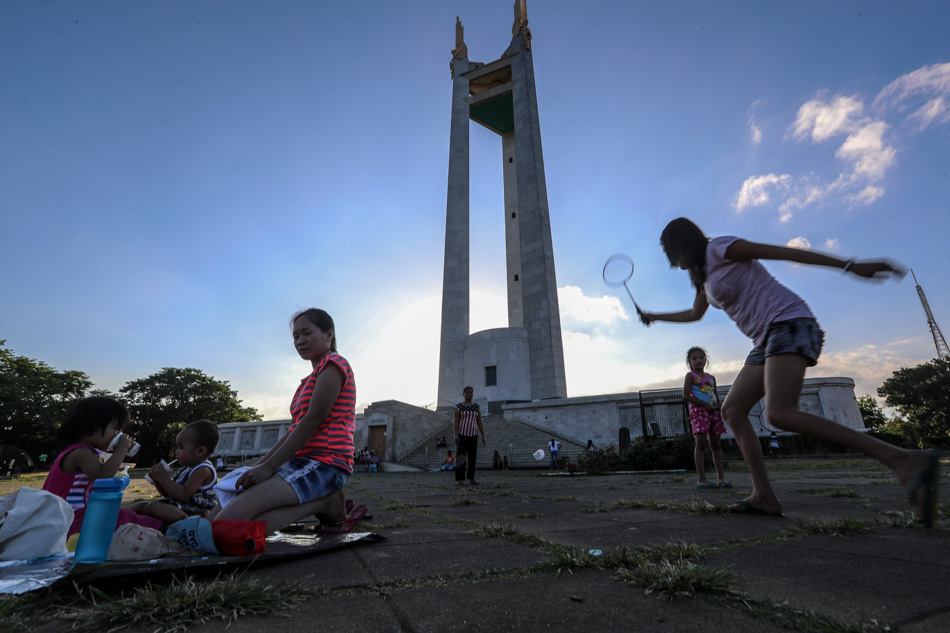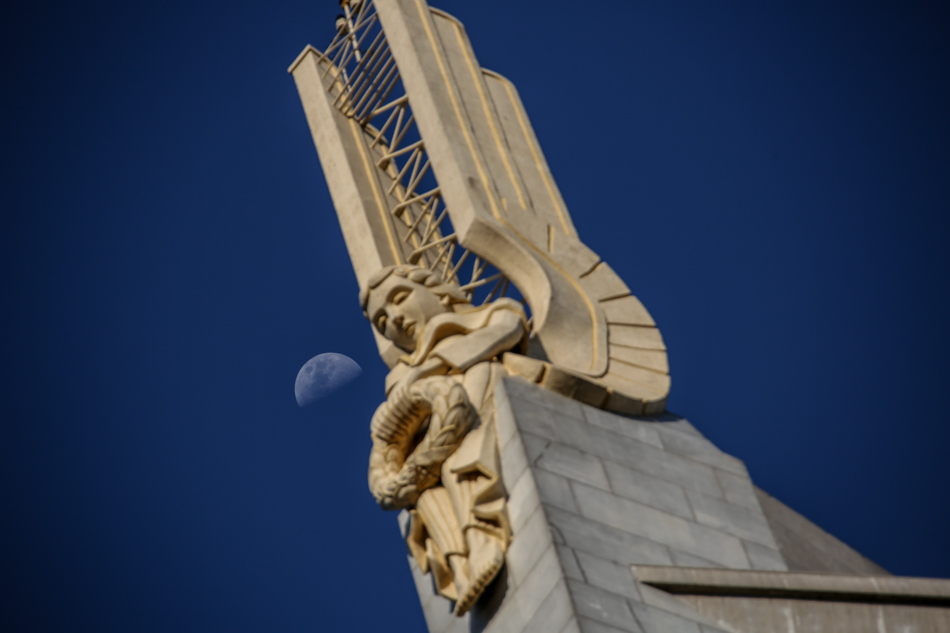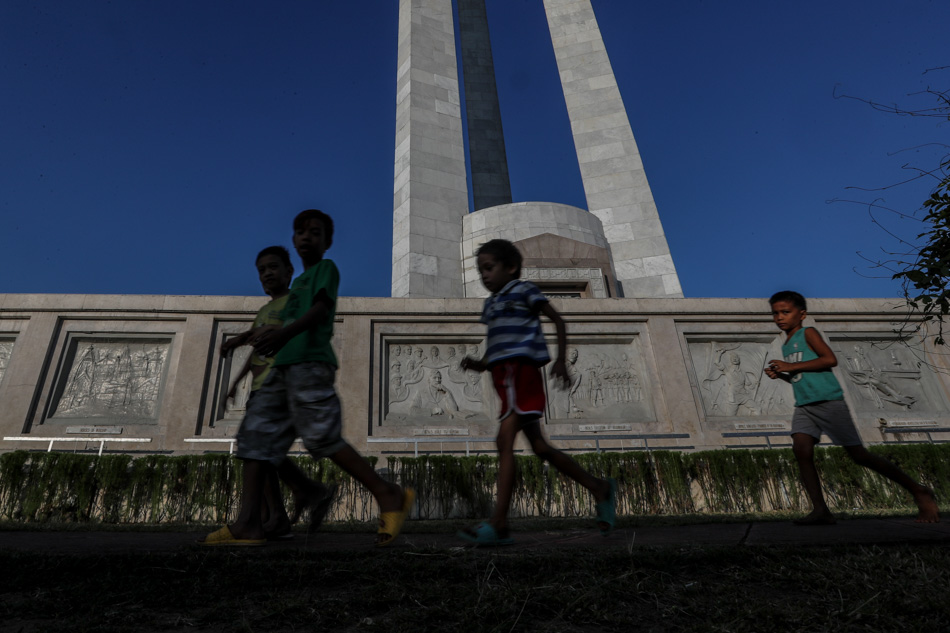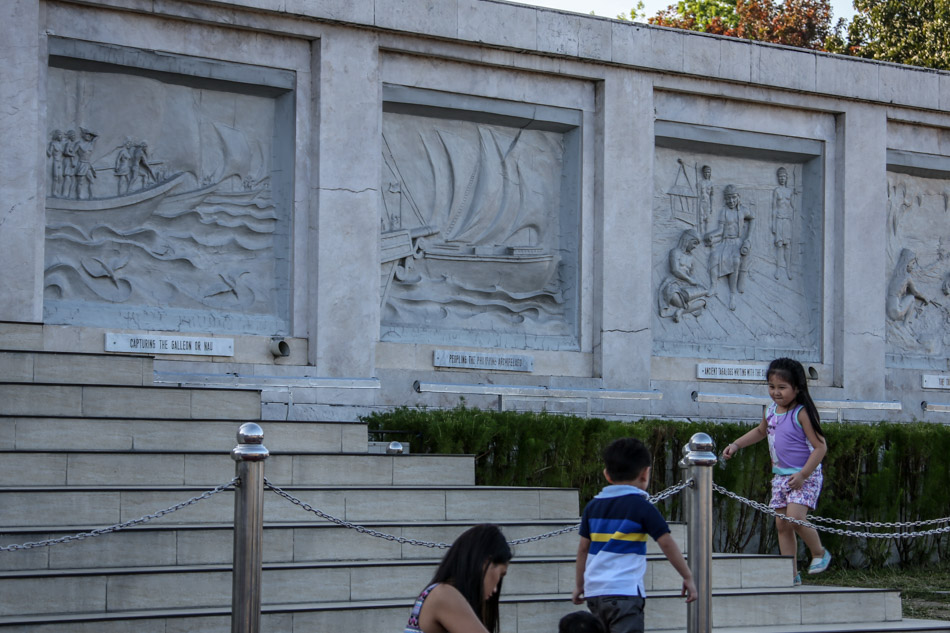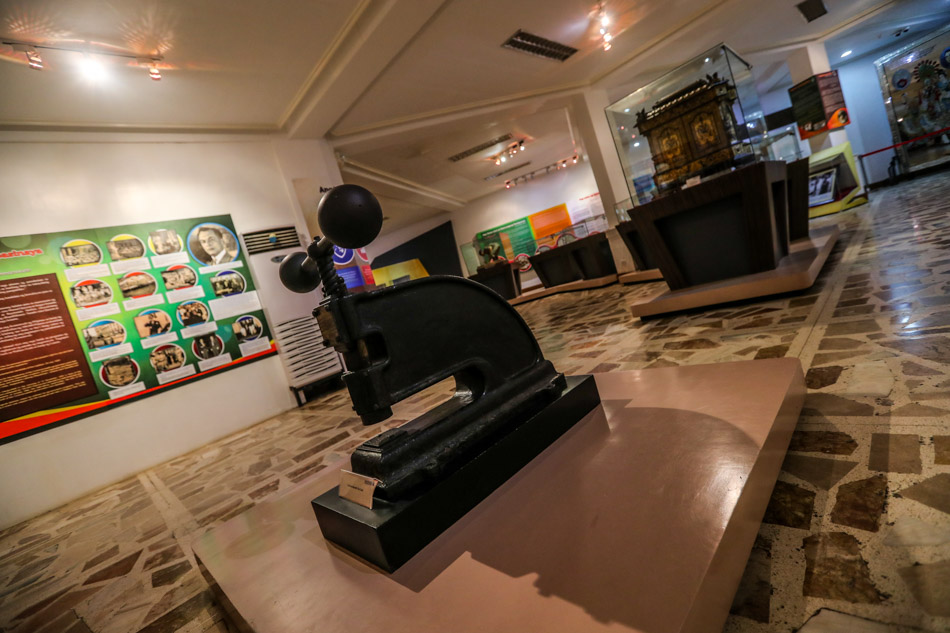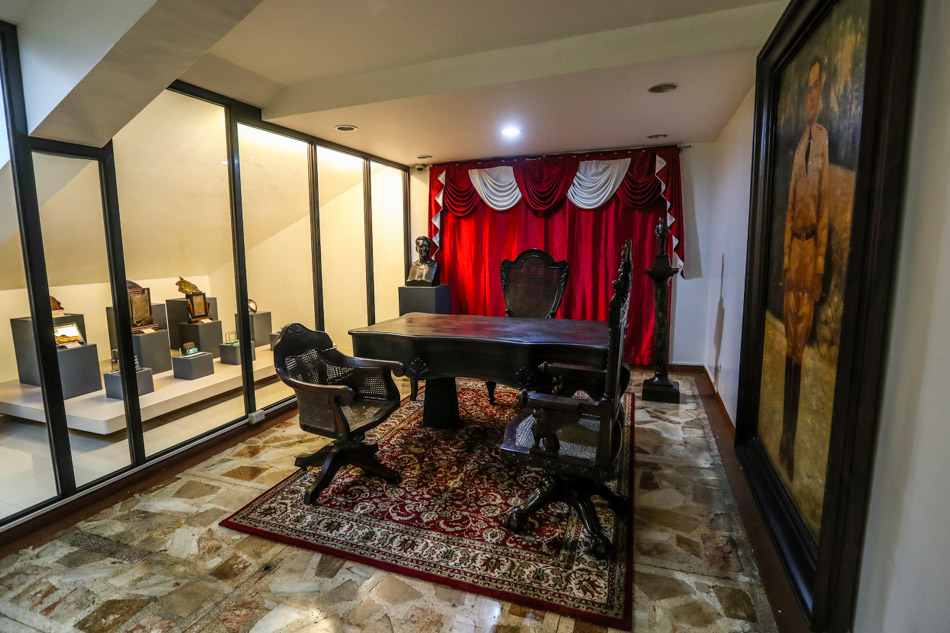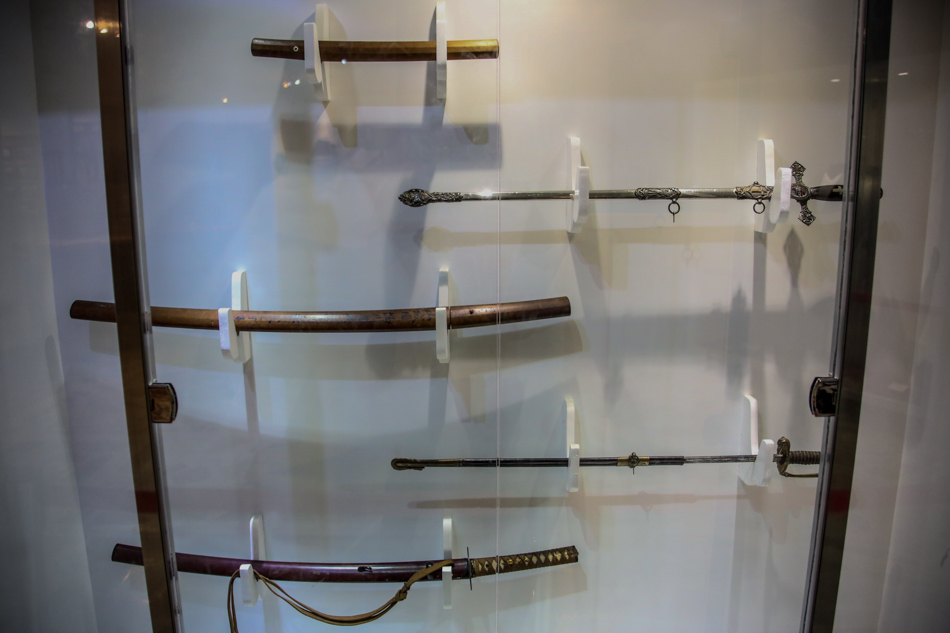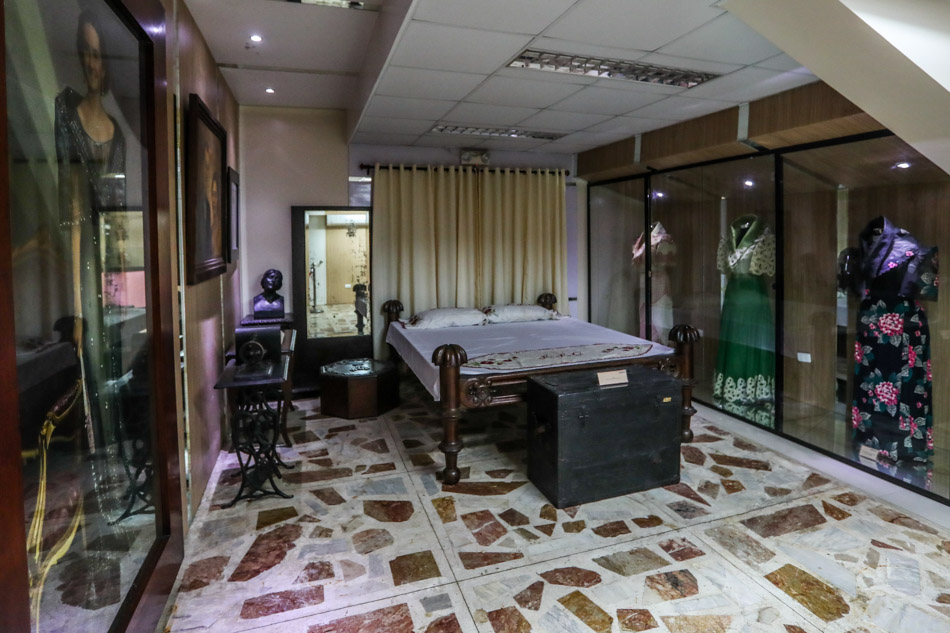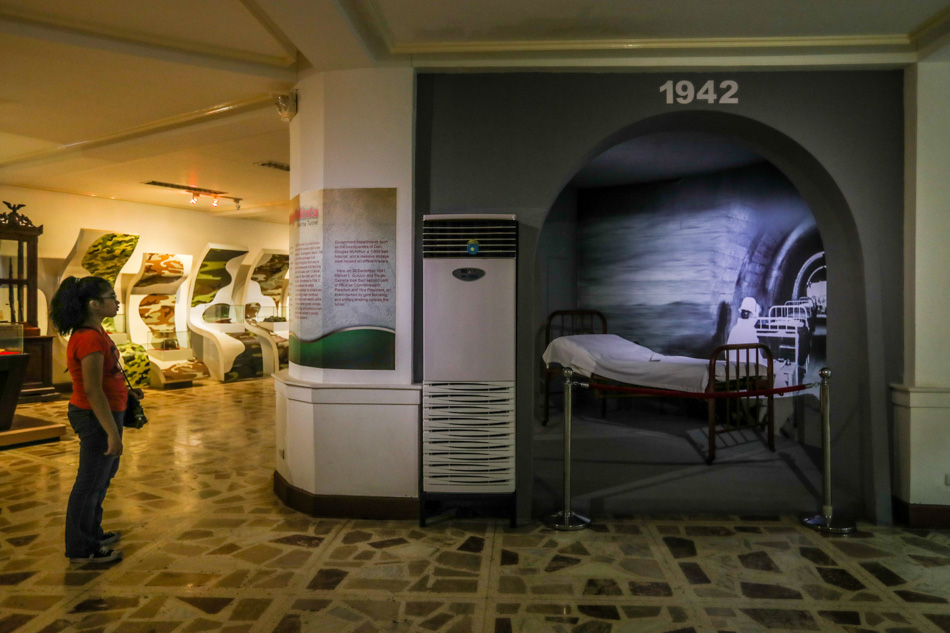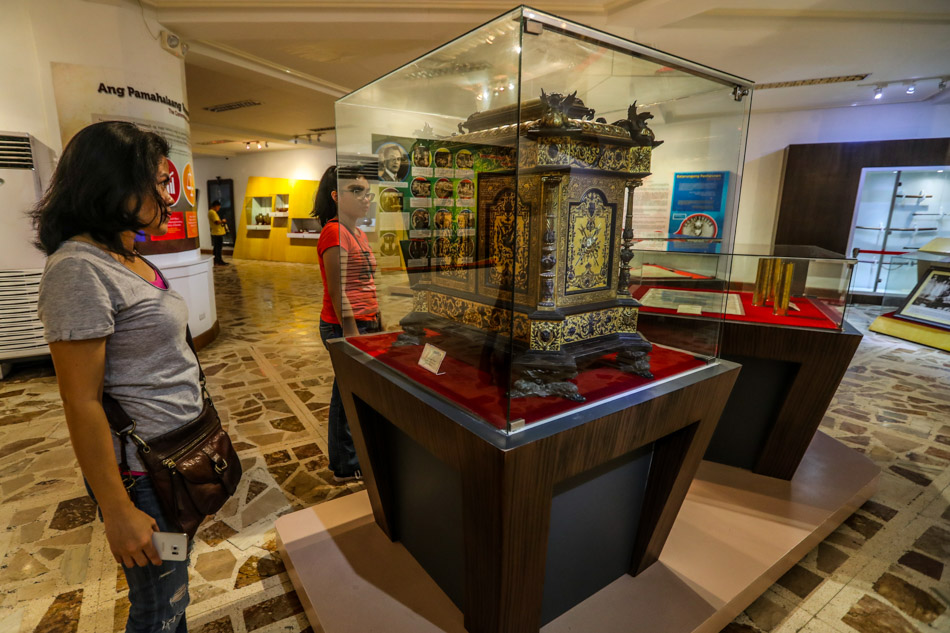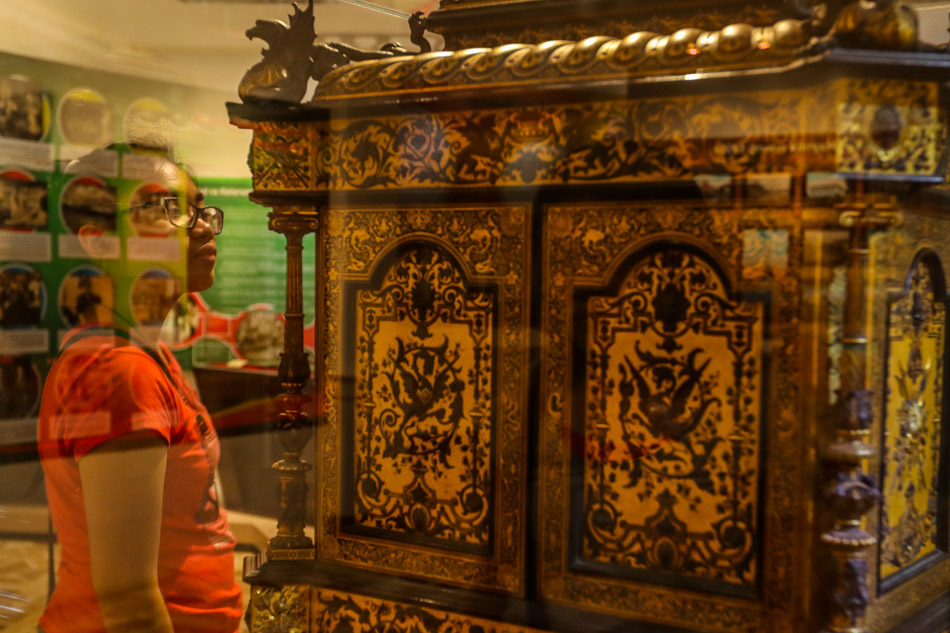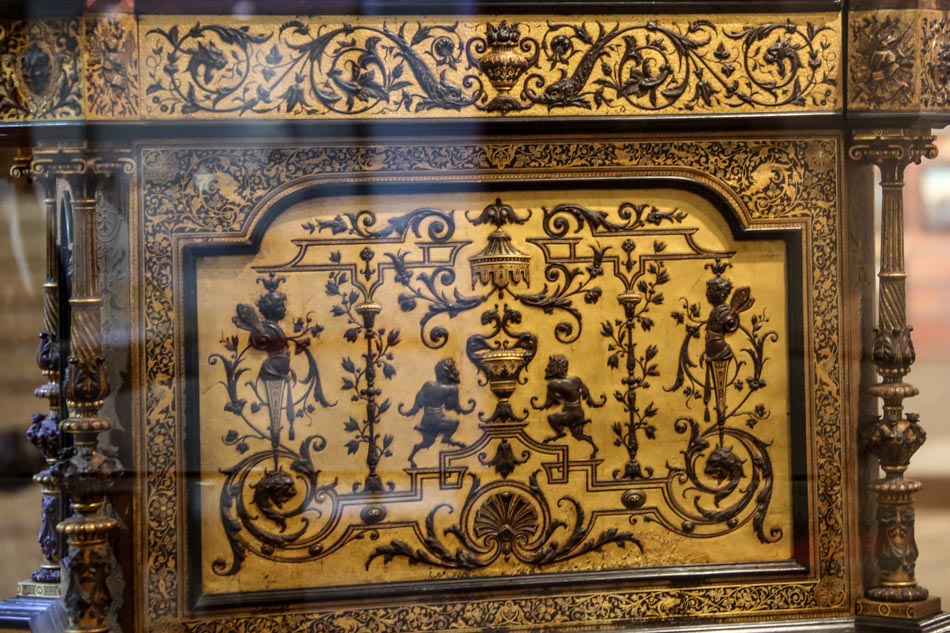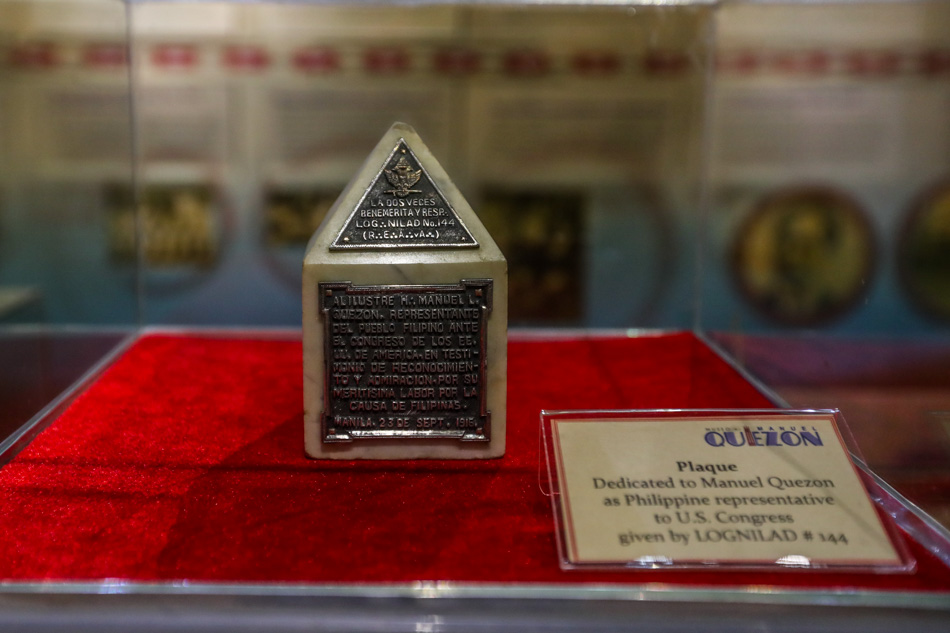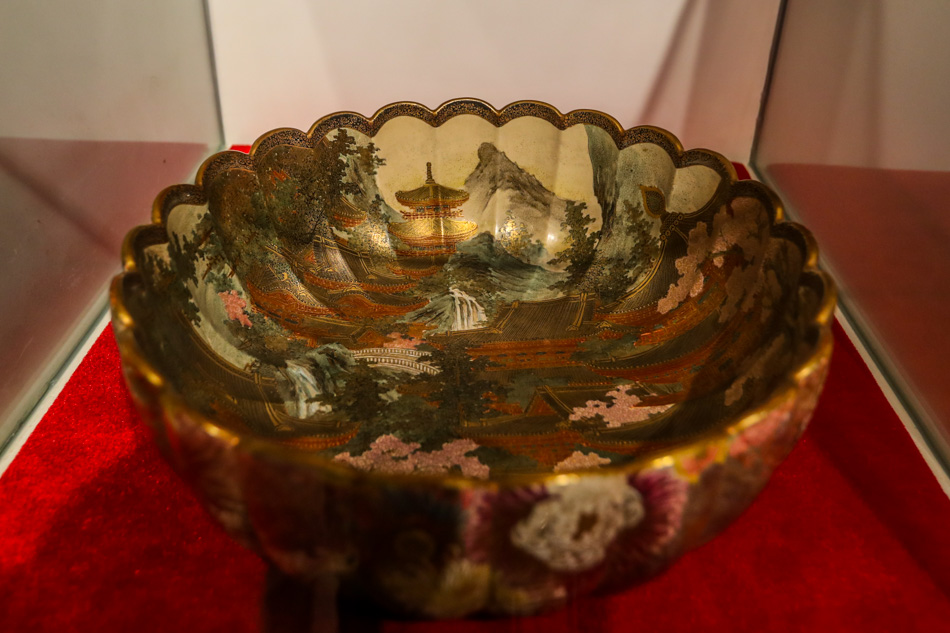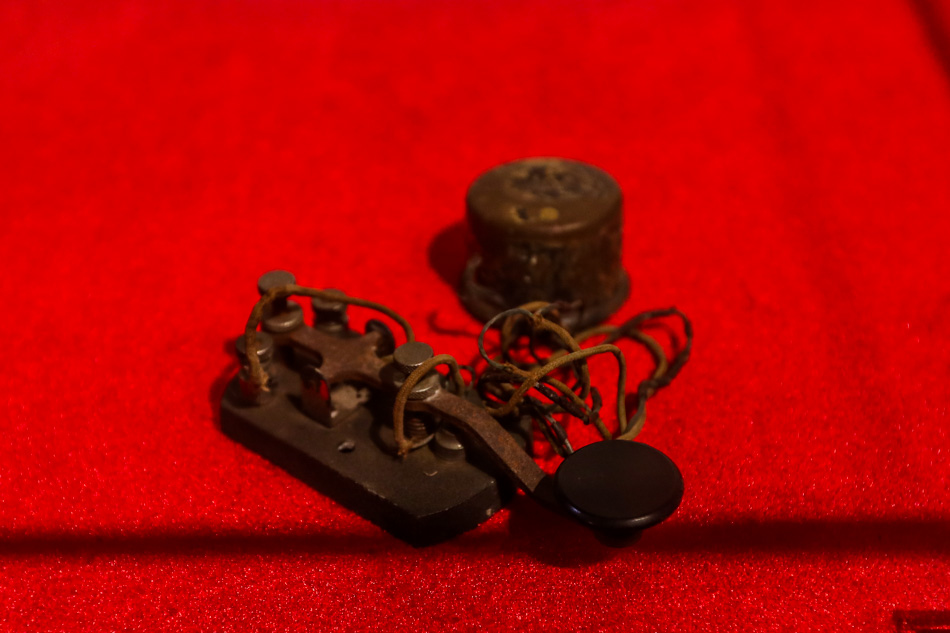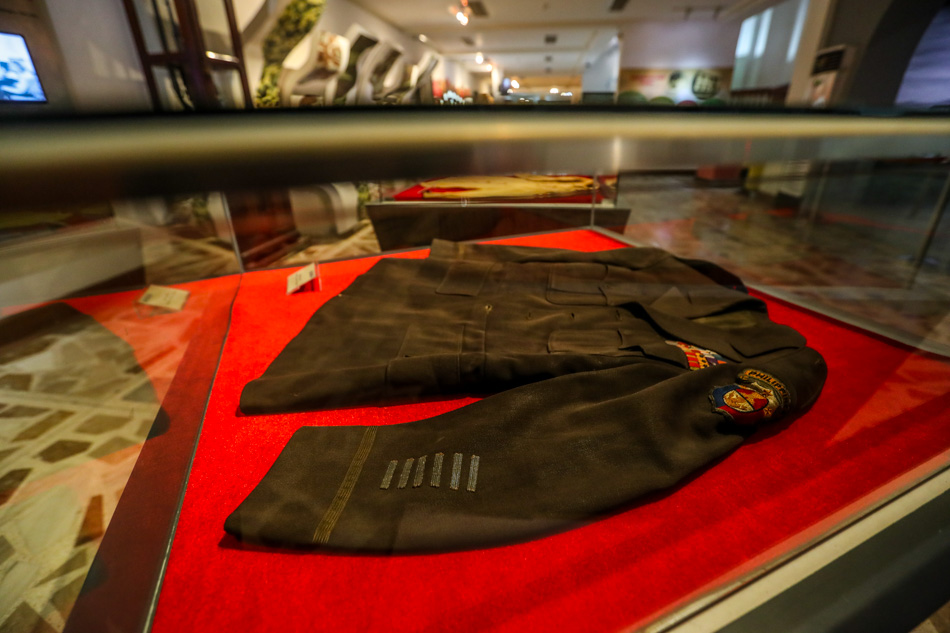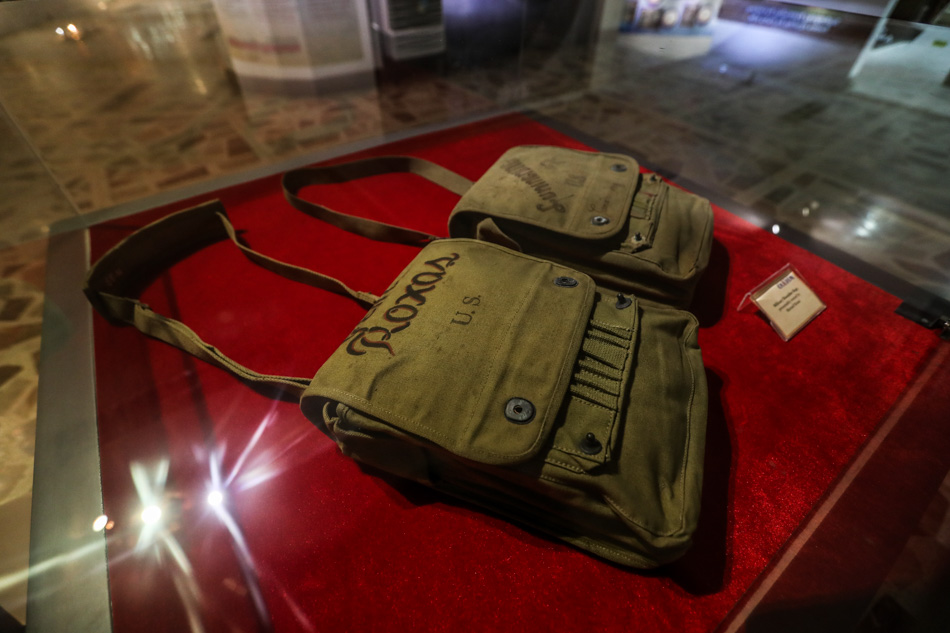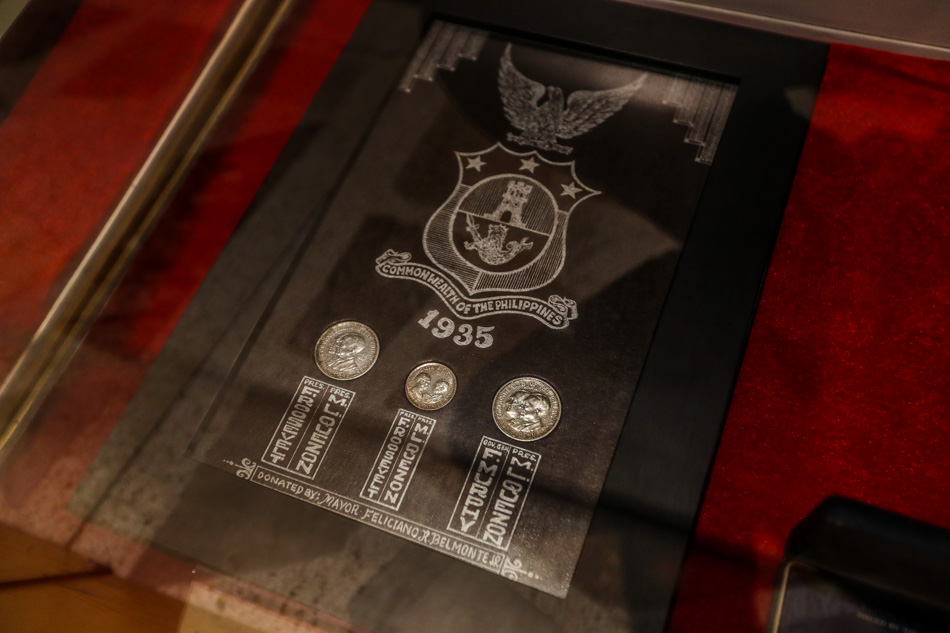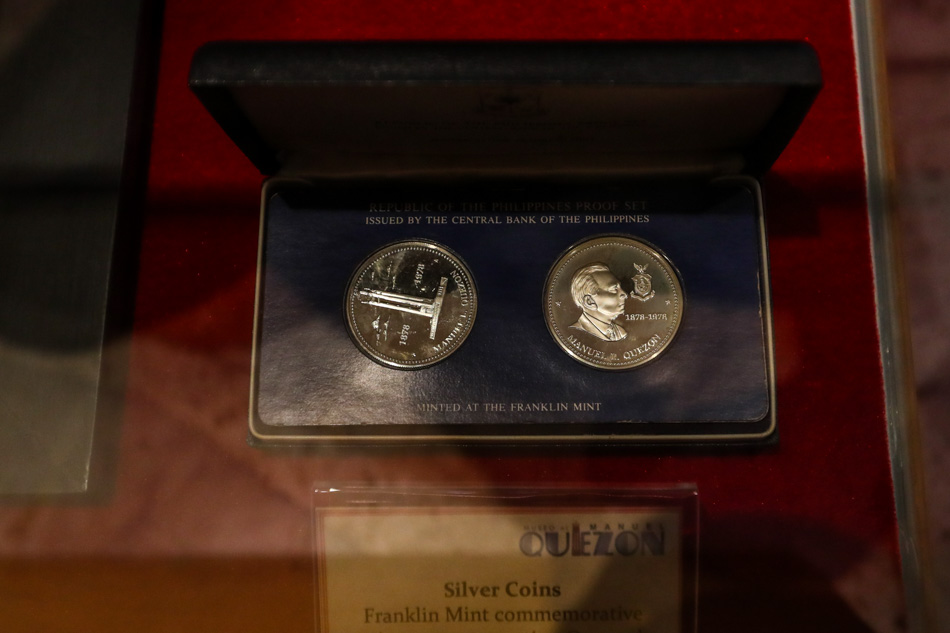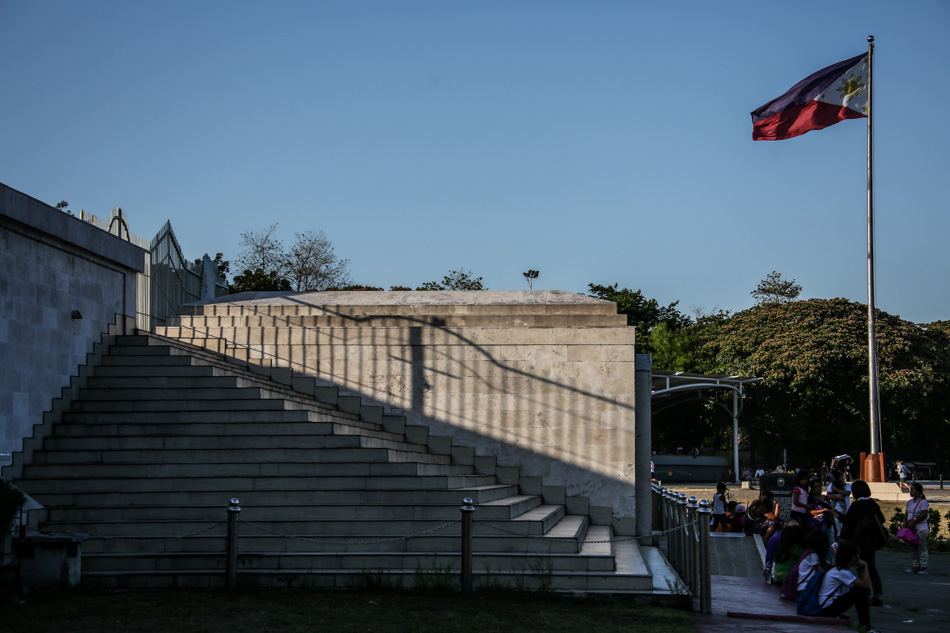Quezon museum: Life of a president and a nation in its tumultuous infancy | ABS-CBN
ADVERTISEMENT

Welcome, Kapamilya! We use cookies to improve your browsing experience. Continuing to use this site means you agree to our use of cookies. Tell me more!
Quezon museum: Life of a president and a nation in its tumultuous infancy
Quezon museum: Life of a president and a nation in its tumultuous infancy
Dominic Menor,
ABS-CBN News
Published Aug 31, 2017 01:42 PM PHT
|
Updated Aug 31, 2017 05:03 PM PHT
Anybody who has driven around or been in the vicinity of the Quezon Memorial Circle is familiar with the monument at its center.
Anybody who has driven around or been in the vicinity of the Quezon Memorial Circle is familiar with the monument at its center.
It is a towering structure that serves as a beacon reminding passersby that beneath it is where the remains of one of the most important Filipino political leaders of the 20th century lie.
It is a towering structure that serves as a beacon reminding passersby that beneath it is where the remains of one of the most important Filipino political leaders of the 20th century lie.
If the shrine stands as a motionless landmark and offers little clue to who President Manuel L. Quezon was, the rooms at its base will bring him to life.
If the shrine stands as a motionless landmark and offers little clue to who President Manuel L. Quezon was, the rooms at its base will bring him to life.
The Museo Ni Manuel Quezon is a multi-gallery album that houses items spanning Quezon's lifetime and even beyond — from when he was a boy in Baler town until he assumed the role of the country's most powerful man, and from his last days to what inspired the construction of the 66-foot tribute and the formation of a city that bears his name.
The Museo Ni Manuel Quezon is a multi-gallery album that houses items spanning Quezon's lifetime and even beyond — from when he was a boy in Baler town until he assumed the role of the country's most powerful man, and from his last days to what inspired the construction of the 66-foot tribute and the formation of a city that bears his name.
ADVERTISEMENT
"Iniisip lang natin lagi na ama siya ng wikang pambansa, pero he's more than that," museum curator Janice Tambo tells ABS-CBN News.
"Iniisip lang natin lagi na ama siya ng wikang pambansa, pero he's more than that," museum curator Janice Tambo tells ABS-CBN News.
"Talagang may firm commitment siya sa social justice natin, binigyan ng pagpapahalaga ng national defense, then iyong railroad system inayos din niya. Nagkaroon tayo ng social equality sa pamamagitan ng pagboto ng mga kababaihan at pwede na silang mahalal.
"Talagang may firm commitment siya sa social justice natin, binigyan ng pagpapahalaga ng national defense, then iyong railroad system inayos din niya. Nagkaroon tayo ng social equality sa pamamagitan ng pagboto ng mga kababaihan at pwede na silang mahalal.
"So marami tayong na-accomplish noong time niya."
"So marami tayong na-accomplish noong time niya."
The Museo was built in 1979, and in 2015 a project to modernize it was completed. There are interactive elements now, the exhibits more systematized, and the language used to tell Quezon's story comes in Tagalog and English.
The Museo was built in 1979, and in 2015 a project to modernize it was completed. There are interactive elements now, the exhibits more systematized, and the language used to tell Quezon's story comes in Tagalog and English.
Besides artifacts and photographs, timelines are all over the museum walls recounting not only Quezon's history but also providing context to his life by putting it side by side with a nation transitioning from American rule then being thrown into the fire that is the Second World War.
Besides artifacts and photographs, timelines are all over the museum walls recounting not only Quezon's history but also providing context to his life by putting it side by side with a nation transitioning from American rule then being thrown into the fire that is the Second World War.
"I want our people to know that the Philippines is their country, that it is the only country that God has given them, that they must keep it for themselves and their children, that they must live for it and if necessary die for it," Quezon said in one wall-posted quote.
"I want our people to know that the Philippines is their country, that it is the only country that God has given them, that they must keep it for themselves and their children, that they must live for it and if necessary die for it," Quezon said in one wall-posted quote.
The galleries are ordered chronologically: it begins with Quezon's youth, fast-forwards to his early years as a public servant, then goes into his time as president of the Philippine Commonwealth and during the Japanese occupation. The last gallery is an exhibit on his legacy, part of which explains how the Quezon Memorial Shrine came into existence.
The galleries are ordered chronologically: it begins with Quezon's youth, fast-forwards to his early years as a public servant, then goes into his time as president of the Philippine Commonwealth and during the Japanese occupation. The last gallery is an exhibit on his legacy, part of which explains how the Quezon Memorial Shrine came into existence.
The items on display range from the expected (clothes, kitchenware, plaques, school certificates and wartime effects) to the not-so-much.
The items on display range from the expected (clothes, kitchenware, plaques, school certificates and wartime effects) to the not-so-much.
There is Quezon's sword collection that includes katana swords, as is his golf bag, which is stored in a room replicating the presidential office.
There is Quezon's sword collection that includes katana swords, as is his golf bag, which is stored in a room replicating the presidential office.
There is a worn-out record, which looks like an overused cymbal, that was given to Quezon by KZRH radio station on his 63rd birthday; in the same glass case, an issue of TIME magazine with the president on the cover.
There is a worn-out record, which looks like an overused cymbal, that was given to Quezon by KZRH radio station on his 63rd birthday; in the same glass case, an issue of TIME magazine with the president on the cover.
A gold in-laid chest where a copy of the 1935 Constitution was stored is on display, too, as is the hospital bed that Quezon used when he was at Malinta Tunnel in Corregidor.
A gold in-laid chest where a copy of the 1935 Constitution was stored is on display, too, as is the hospital bed that Quezon used when he was at Malinta Tunnel in Corregidor.
Doña Aurora, Quezon's wife, has a section devoted to her. A replica of her room contains a bed, her dresses and a sewing machine.
Doña Aurora, Quezon's wife, has a section devoted to her. A replica of her room contains a bed, her dresses and a sewing machine.
Tambo says it's misguided to think of her as just a presidential spouse.
Tambo says it's misguided to think of her as just a presidential spouse.
"Supportive si Doña Aurora kay Pangulong Quezon sa mga advocacy niya. Habang ginagawa ni Quezon iyong duties niya as president, si Doña Aurora naging honorary president ng Red Cross, Girl Scouts of the Philippines, so may mga civic organizations siyang na-create na hanggang ngayon active pa rin," Tambo says.
"Supportive si Doña Aurora kay Pangulong Quezon sa mga advocacy niya. Habang ginagawa ni Quezon iyong duties niya as president, si Doña Aurora naging honorary president ng Red Cross, Girl Scouts of the Philippines, so may mga civic organizations siyang na-create na hanggang ngayon active pa rin," Tambo says.
"Marami siyang ginawa to serve the country."
"Marami siyang ginawa to serve the country."
Not all items on display are meant to place visitors in a time machine.
Not all items on display are meant to place visitors in a time machine.
The fifth gallery on Quezon's legacy ties his impactful yet oft-overlooked contributions — and the volatile times in which they were advanced — to the present day.
The fifth gallery on Quezon's legacy ties his impactful yet oft-overlooked contributions — and the volatile times in which they were advanced — to the present day.
His political contemporaries — both in the US and fellow Filipinos — held Quezon in high regard. Their shared hope is that people's idea of him goes beyond the name of a bustling metropolis and the edifice at the heart of it.
His political contemporaries — both in the US and fellow Filipinos — held Quezon in high regard. Their shared hope is that people's idea of him goes beyond the name of a bustling metropolis and the edifice at the heart of it.
"Death forever closed his lips and stayed his pen," General Douglas McArthur said, "but the immortal spirit which sustains his soul remains forever a dominant influence upon the destiny of the republic for which he gave so much."
"Death forever closed his lips and stayed his pen," General Douglas McArthur said, "but the immortal spirit which sustains his soul remains forever a dominant influence upon the destiny of the republic for which he gave so much."
Carlos P. Romulo, former president of the UN General Assembly who was an important figure in the Philippines' campaign to be independent of the US, said Quezon "remains my hero, the finest type of leader I shall ever know."
Carlos P. Romulo, former president of the UN General Assembly who was an important figure in the Philippines' campaign to be independent of the US, said Quezon "remains my hero, the finest type of leader I shall ever know."
"He will always be, to me and our people, the embodiment of unalloyed patriotism."
"He will always be, to me and our people, the embodiment of unalloyed patriotism."
Museo ni Manuel Quezon is open Thursdays to Sundays, 8 a.m. to 4 a.m.
Read More:
Museo ni Manuel Quezon
ADVERTISEMENT
ADVERTISEMENT




